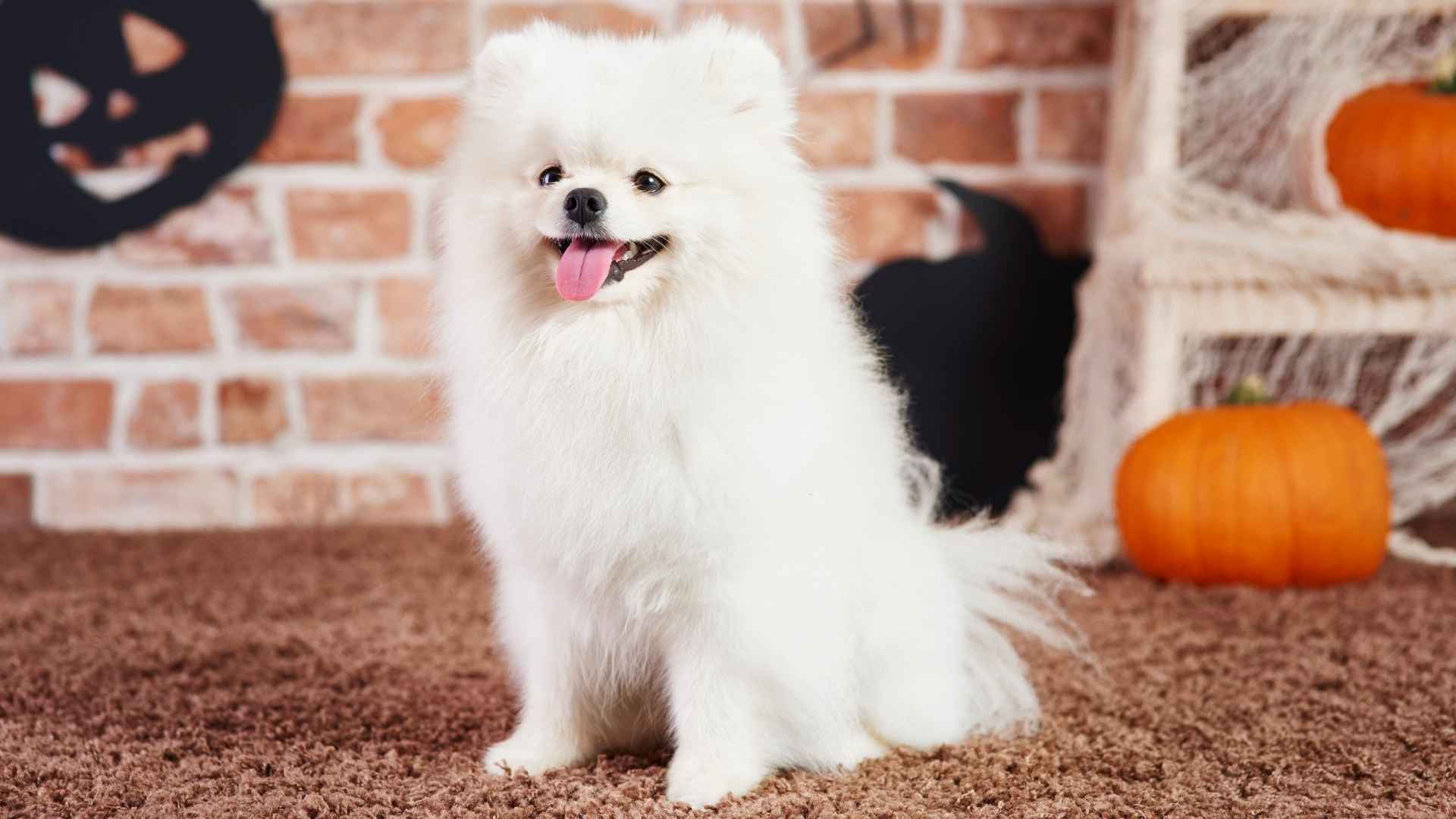What is it about a small white dog that makes people stop and smile? Is it their soft, cloud-like fur? Their delicate size? Or maybe it’s the way they carry themselves—like they know they’re special.
Small white dogs seem to hold a little extra charm. They turn heads in parks, melt hearts in photos, and bring a cozy kind of joy into any home. These dogs don’t just look good.
They come with big personalities packed into tiny bodies. Some are playful explorers, always looking for fun. Others are lap lovers who simply want to stay close. But they all have one thing in common: presence.
If you’ve ever wanted a dog that’s both stylish and sweet, small and full of character, there’s likely a white-coated pup perfect for you. Here are the most loved small white dog breeds—and what makes each one worth knowing.
Small White Dog Breeds
1. Coton de Tulear
The Coton de Tulear has a distinctive dry coat that looks puffy but feels light and textured. Their size stays within 8–13 pounds, making them a compact companion with a striking white appearance. Their coat doesn’t shed easily, which keeps the soft look intact for longer stretches.
Hair That Needs a Gentle Hand
This breed’s coat tangles frequently, especially behind the ears and legs, and needs brushing several times a week, as mentioned in the PetMD. Groomers often use pin brushes to preserve the hair’s shape without flattening its natural bounce. Light misting helps prevent breakage while keeping the texture fluffy.
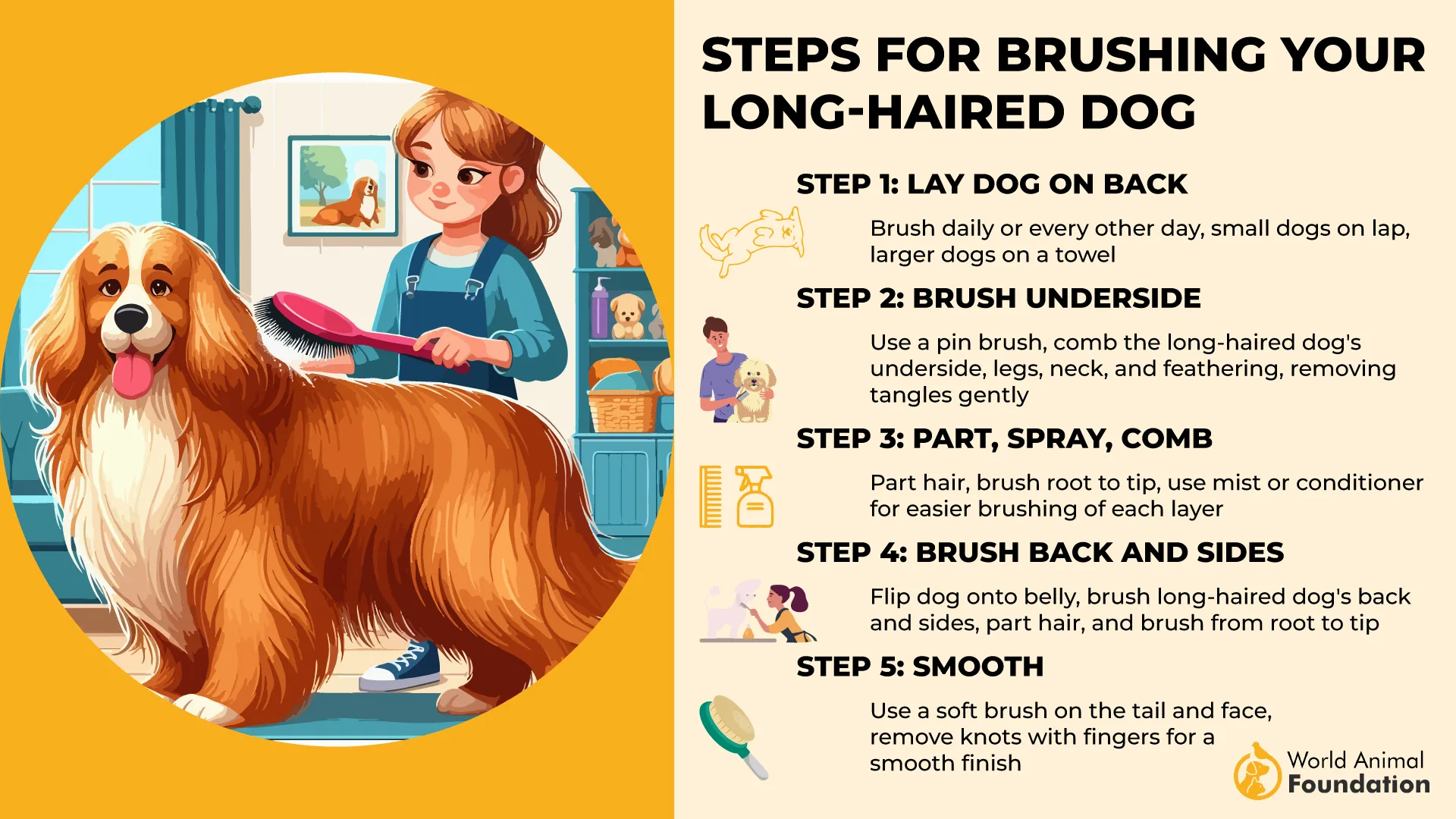
Bright Temperament with Close Bonds
Cotons form strong attachments and are known for being especially attentive to human emotions. They thrive in routines and may tilt their head subtly when trying to understand familiar words. Their sensitivity also makes them respond differently from other dogs in busy environments.
History Shaped Their Adaptability
They were originally bred in Madagascar and have long been favored by nobles for their cheerful nature and companionship. As small dogs, they’re easy to manage in both apartments and houses. Their cottony coat is often compared to soft wool, though it’s naturally drier and finer.
2. Havanese
The Havanese coat grows long and lightweight, often described as airy with a soft fall rather than a heavy drop. Their coat comes in many shades, though white remains one of the most desired for its clean, classic look. Regular trimming near the ears and paws helps keep their silhouette neat.
Care That Keeps the Texture Right
Their fine double coat doesn’t mat as easily as it appears, but it still requires brushing multiple times a week. A mix of wide-tooth combs and pin brushes helps prevent snags without flattening the volume. Groomers recommend hand-scissoring around the legs to preserve balance in body shape.
Behavior Rooted in Companionship
They’re alert and often follow their people from room to room without demanding attention. Their expressive eyes and soft gait make them particularly suited for homes with gentle routines. Many describe them as a dependable family pet that adjusts well across generations.
A Toy Breed with Balanced Traits
Though they’re small in size, they move with a springy step that reflects their origin in the Cuban aristocracy. Their adaptability makes them easy for pet parents to integrate into different daily lifestyles. The coat type, especially in white, often gives the impression of curly white hair under certain light.
3. French Bulldog
French Bulldogs usually weigh under 28 pounds and stand less than 12 inches tall. Their frame is compact, but their wide chest and solid limbs give them surprising strength. Their smooth, short white coat makes them easy to care for, with minimal grooming required.
Ears and Expression Set Them Apart
Their signature bat-like ears are large, upright, and always alert without being overly reactive. These ears contrast against their rounded skull, giving their face a constant look of curiosity. White-coated varieties often have faint cream or pale fawn shading on the head and chest.
Personality Fit for Indoor Life
They enjoy calm indoor environments, showing bursts of energy followed by long naps. Frenchies communicate through subtle snorts and soft yawns when they want attention or comfort. Their calm, cuddly personality makes them ideal companion animals for quieter routines.
Behavior That’s Full of Charm
As little dogs, they don’t need much exercise but love short interactive play sessions. Their sociable nature helps them get along with others, especially as a playful companion in multi-pet households. Though not long-haired, many owners still describe them as a warm, fluffy companion to relax with.
4. Pomeranian
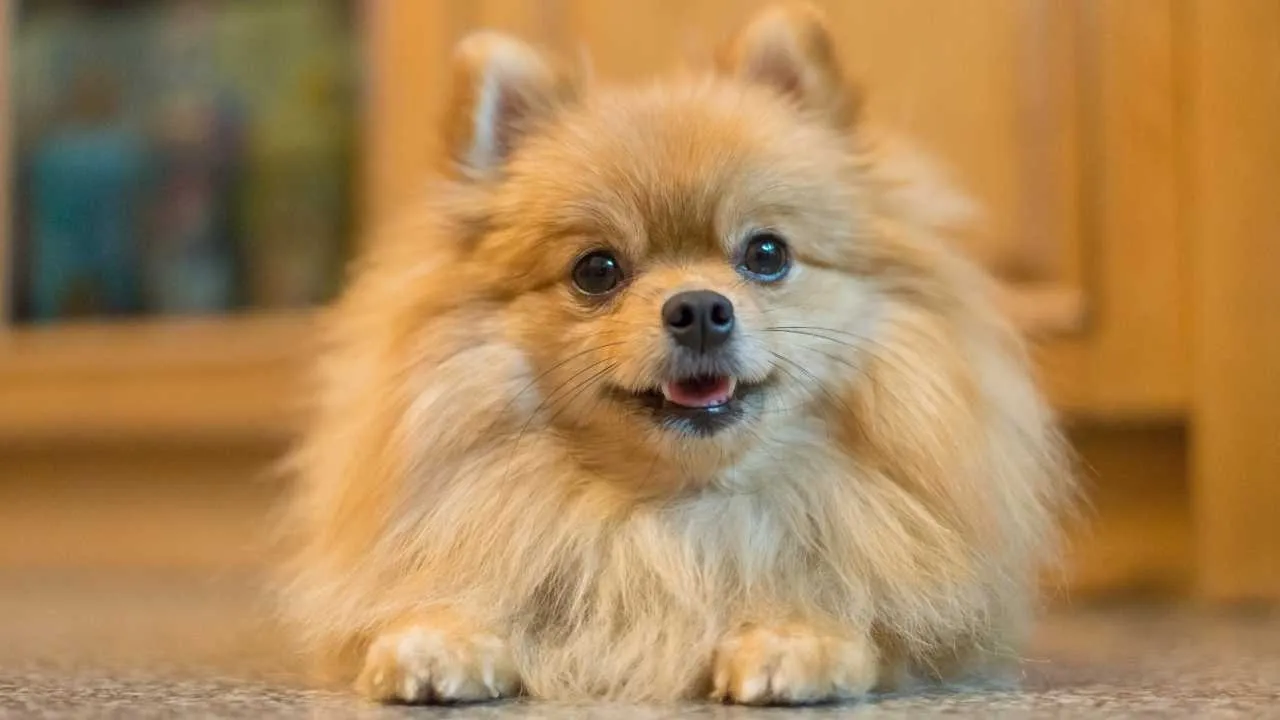
The Pomeranian’s thick double coat gives it a full, fluffy appearance that stands out in white. Their undercoat is soft and compact, while the outer layer feels springy with a dry finish. Weekly brushing with a slicker brush helps prevent compacting at the base of the coat.
Ears and Mane That Frame the Face
Their small, triangular ears are covered in soft, upright fur that blends into the rest of their coat. The neck ruff, also known as a frill, surrounds their face like a mane and grows thicker during seasonal coat changes. These features contribute to their lion-like silhouette.
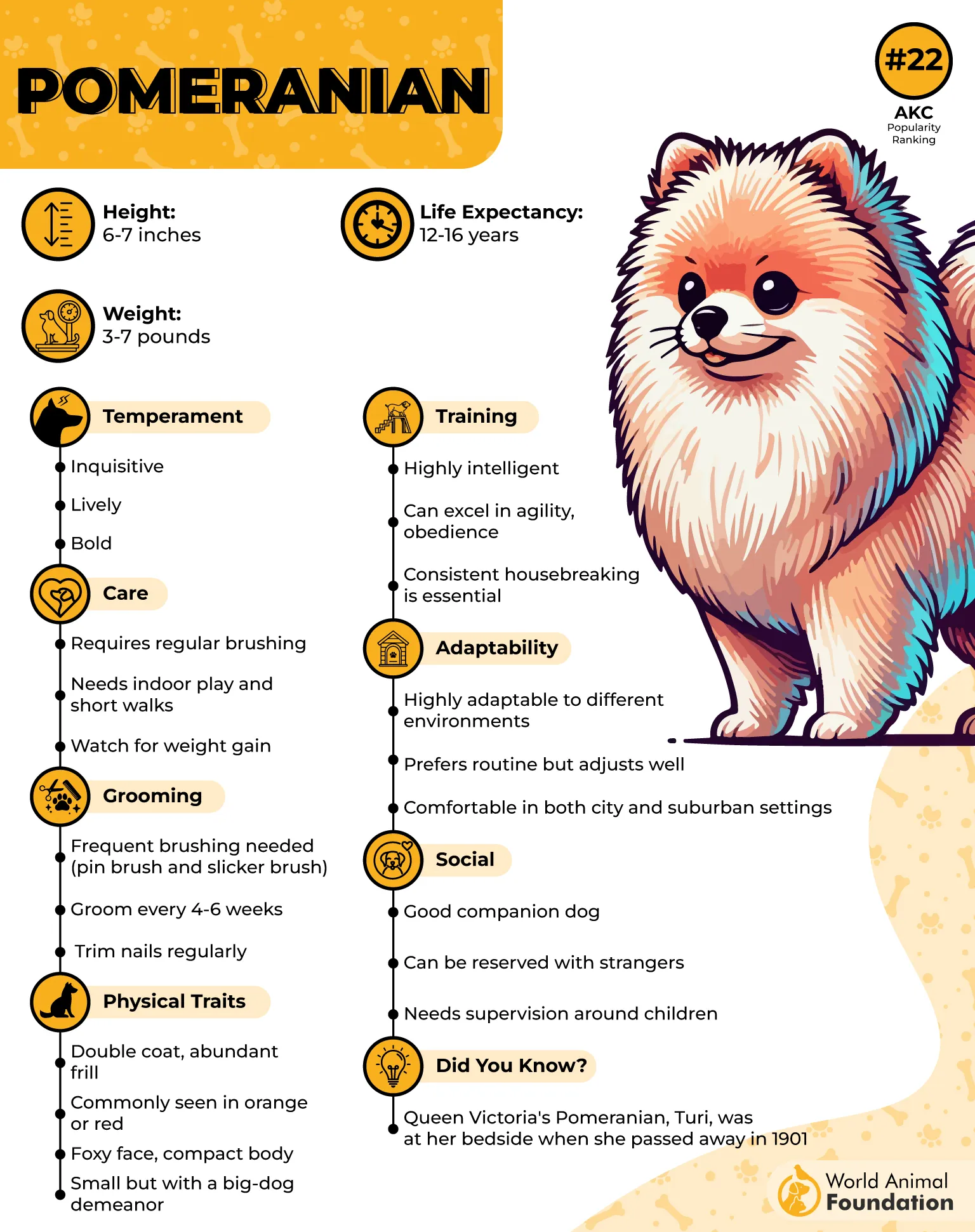
Big Personality in a Compact Body
Despite their small size, Pomeranians show strong alertness and are quick to react to new sounds or changes in their surroundings, as Petplan highlighted. Early socialization from a young age helps manage their vocal tendencies and builds trust. They often thrive best when given structured daily routines.
Grooming Needs and Handling Style
Maintaining their coat requires commitment, especially around the legs and chest, where mats form easily. They do best with experienced pet handlers who understand the grooming needs of small breeds. Their coat also traps warmth, which helps them tolerate mild cold despite their size.
5. Lhasa Apso
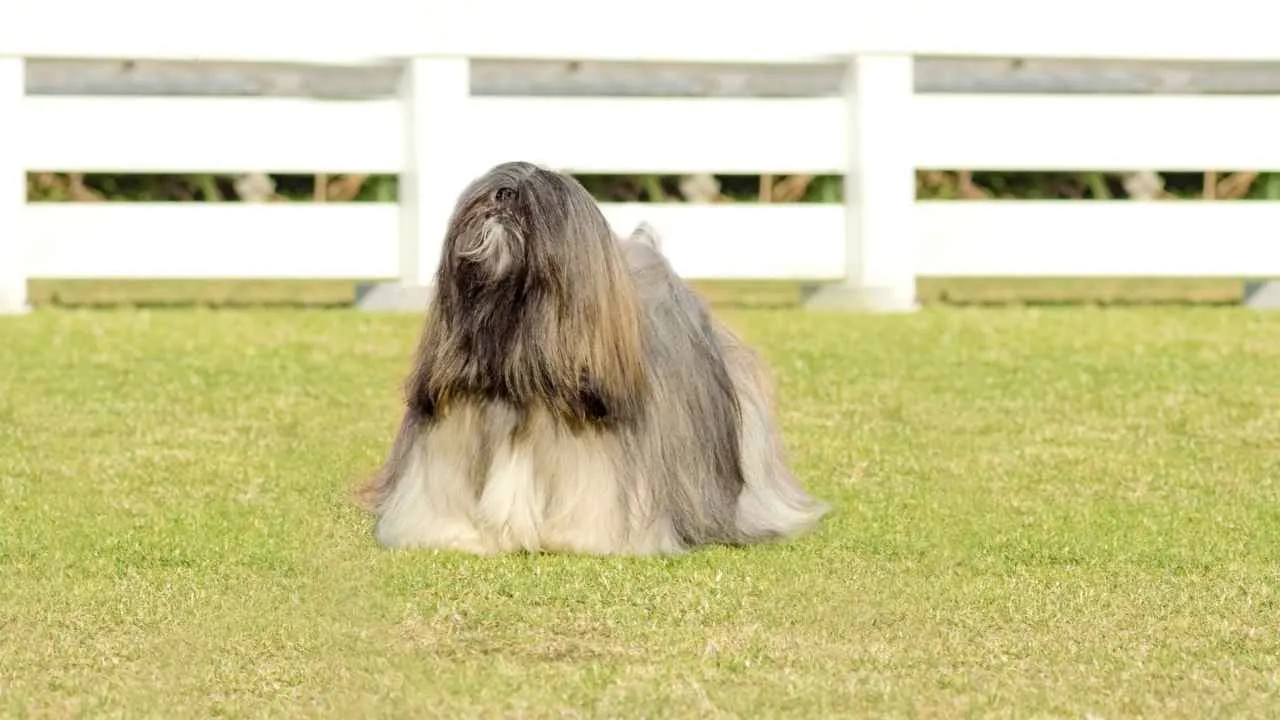
The Lhasa Apso has a dense, straight outer coat that parts naturally down the spine and covers the body evenly. It’s not woolly or curled — the strands feel smooth and heavy when brushed correctly. Though not all are fully white, many carry soft cream and fluffy white tones that stand out.
Maintenance Suited for Routine-Based Owners
Their coat grows continuously, requiring frequent trimming or careful brushing to prevent tangles. The hair can easily fall into the eyes, so many owners tie it up to reduce irritation. Regular grooming becomes part of daily life for those who want to keep the coat floor-length.
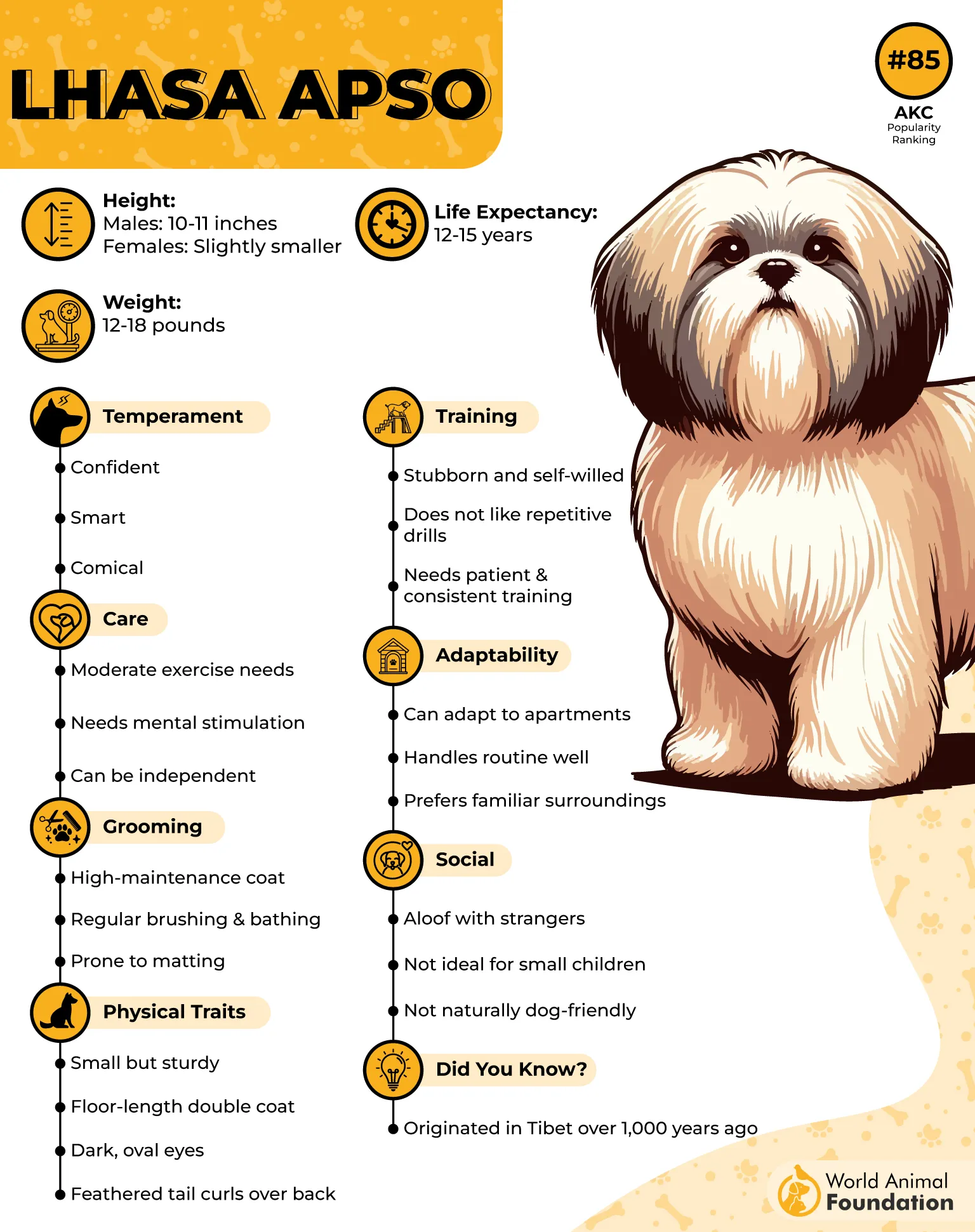
Temperament Marked by Awareness
Originally used as alert dogs in Tibetan monasteries, Lhasas still carry a strong instinct to watch and listen closely. They often remain quiet but will bark at unfamiliar sounds with sharp precision. Their confidence and calmness make them unique among adaptable dogs in indoor settings.
Gets Along When Respected
While they’re deeply loyal to their household, Lhasas tend to be reserved around strangers. They may coexist peacefully with other pets, especially if introduced early and with clear boundaries. Their independence shows in how they choose moments of closeness rather than seeking constant attention.
6. Bichon Frise
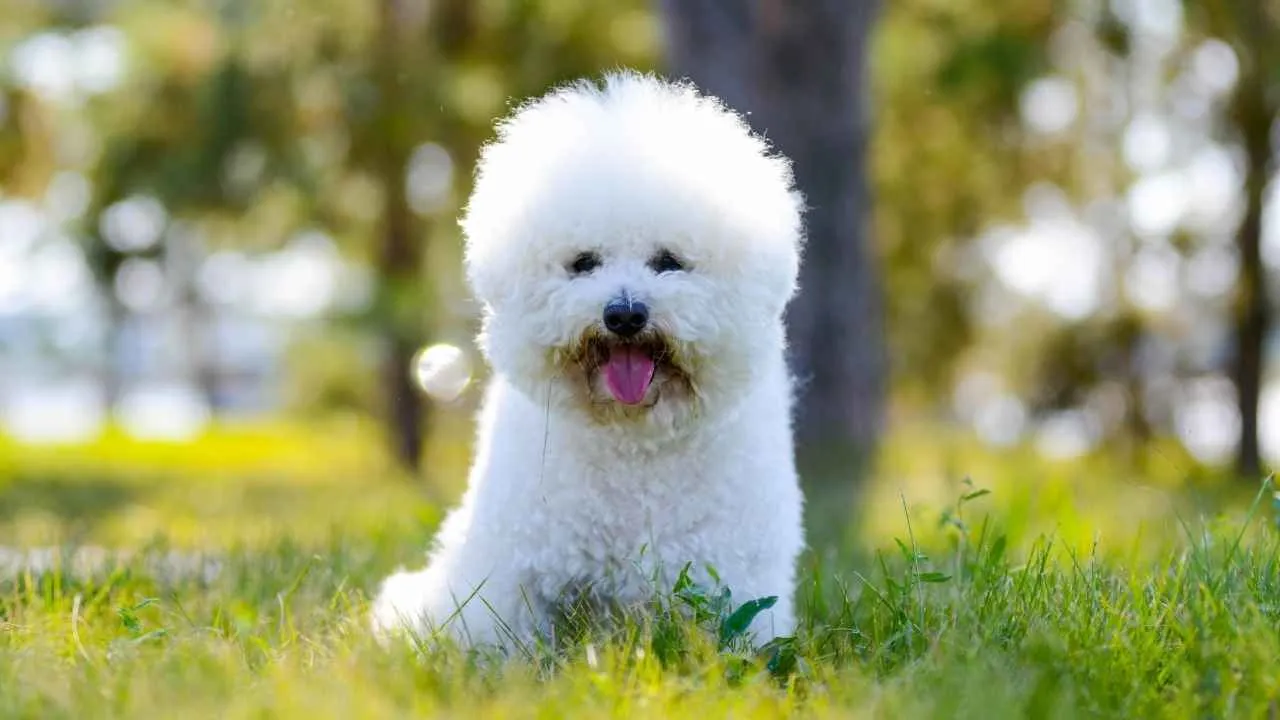
The Bichon Frise has a double coat with a soft underlayer and a dense outer coat that feels plush and bouncy to the touch. When well-groomed, the texture holds its rounded shape without stiffness. Their naturally white fur reflects light, giving them a clean, cotton-ball appearance.
Regular Grooming Keeps the Look Intact
To maintain their softness, brushing needs to happen at least three to four times a week. A combination of combing and scissoring techniques helps prevent matting and keeps the texture springy. Moisturizing sprays are often used to protect the coat from drying during grooming.
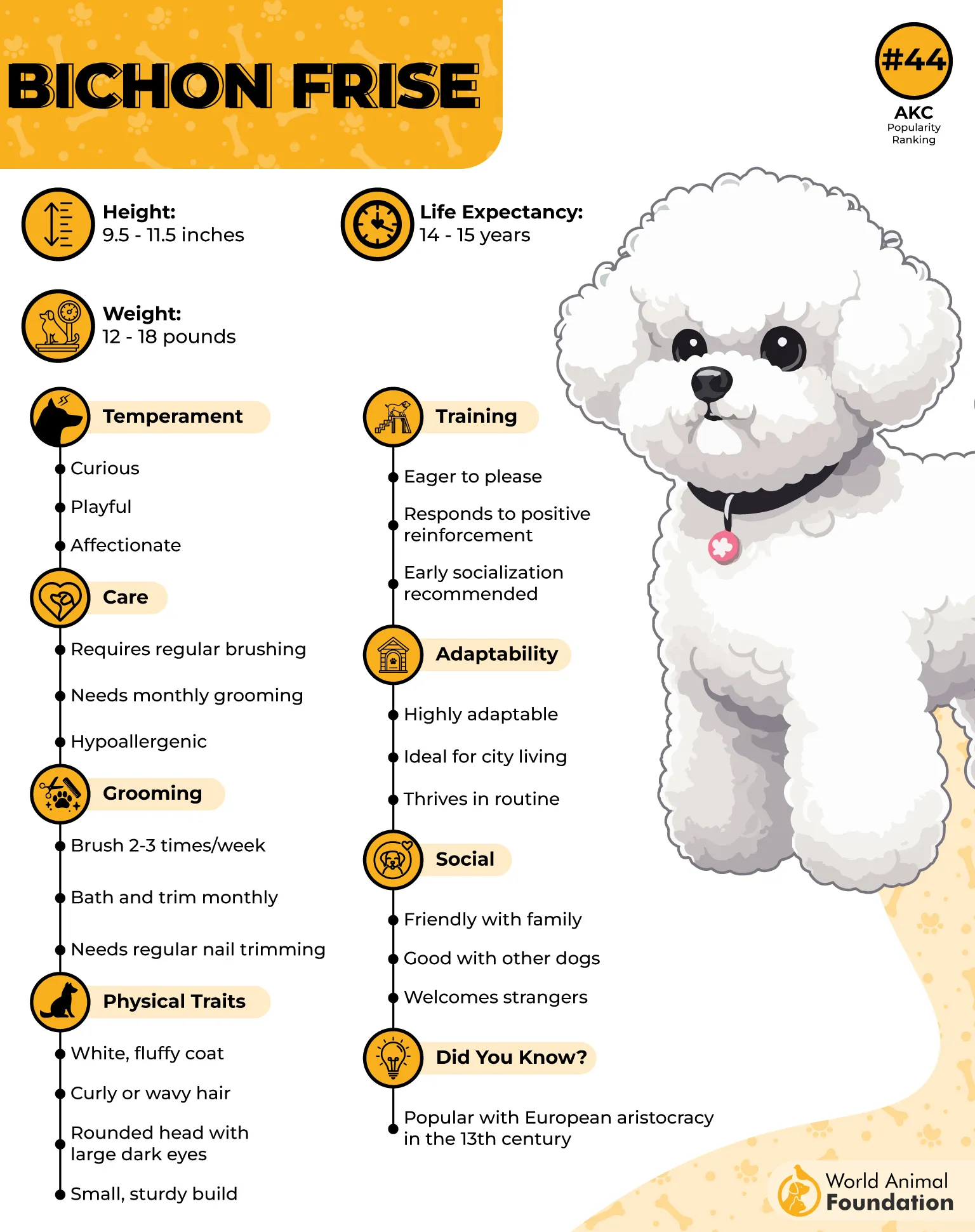
Energy Expressed in Subtle Gestures
Bichons are observant and expressive, often wagging their entire body when excited. They’re drawn to human interaction and use light barks or tail flicks to get attention. When properly socialized, they respond well to new environments and stay connected with their handlers.
Personality That Stands Out in Small Groups
Compared to other breeds of their size, Bichons show more flexibility in adapting to shifting family dynamics. They’ve long been recognized as lively companions, particularly in homes with structured routines. Their playful spirit often comes through in short bursts of hopping or gentle paw taps.
7. Maltese
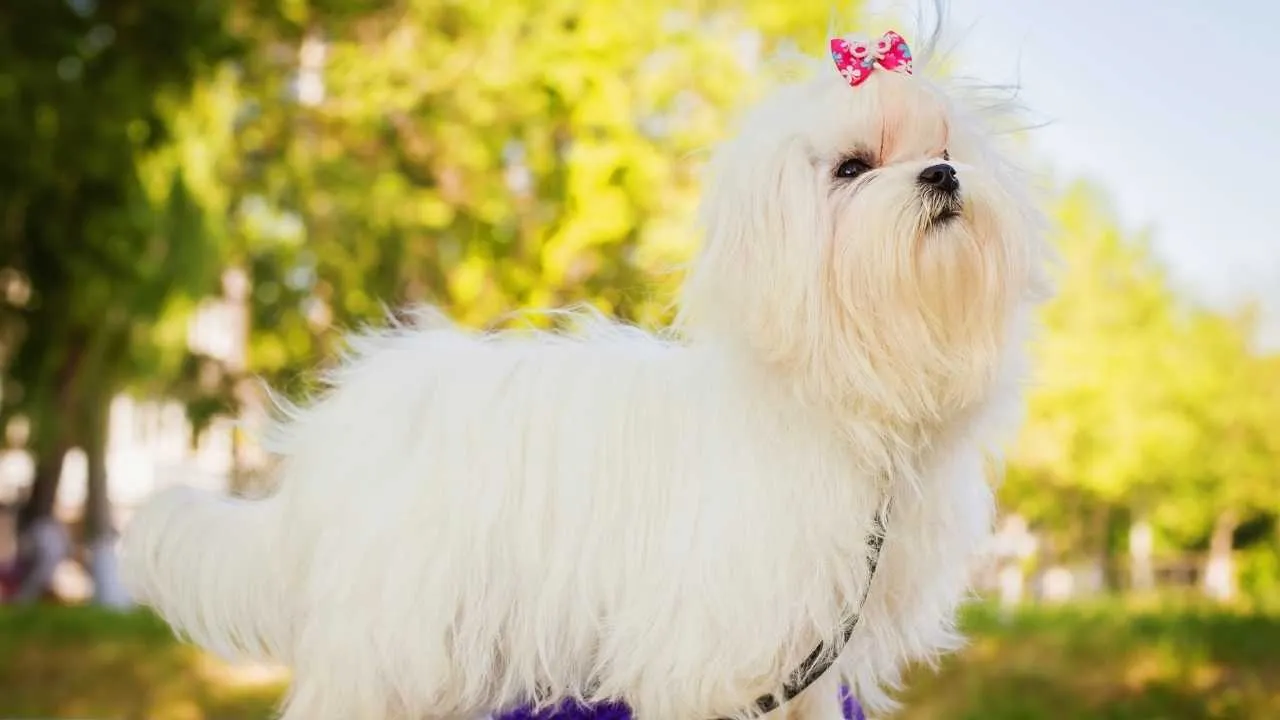
Maltese have a single-layered coat made of flat, straight hair that drapes smoothly down their body. The strands are silky rather than fluffy, making their texture closer to human hair than typical dog fur. This breed doesn’t have an undercoat, which keeps their appearance light and fine.
Care That Demands Patience
Their pure white coat tangles quickly if not combed daily, especially around the armpits and behind the ears, as Pawlicy Advisor advises. Many owners use metal combs and conditioning sprays to prevent breakage and matting. Regular trims around the eyes are essential for keeping their vision clear and irritation-free.
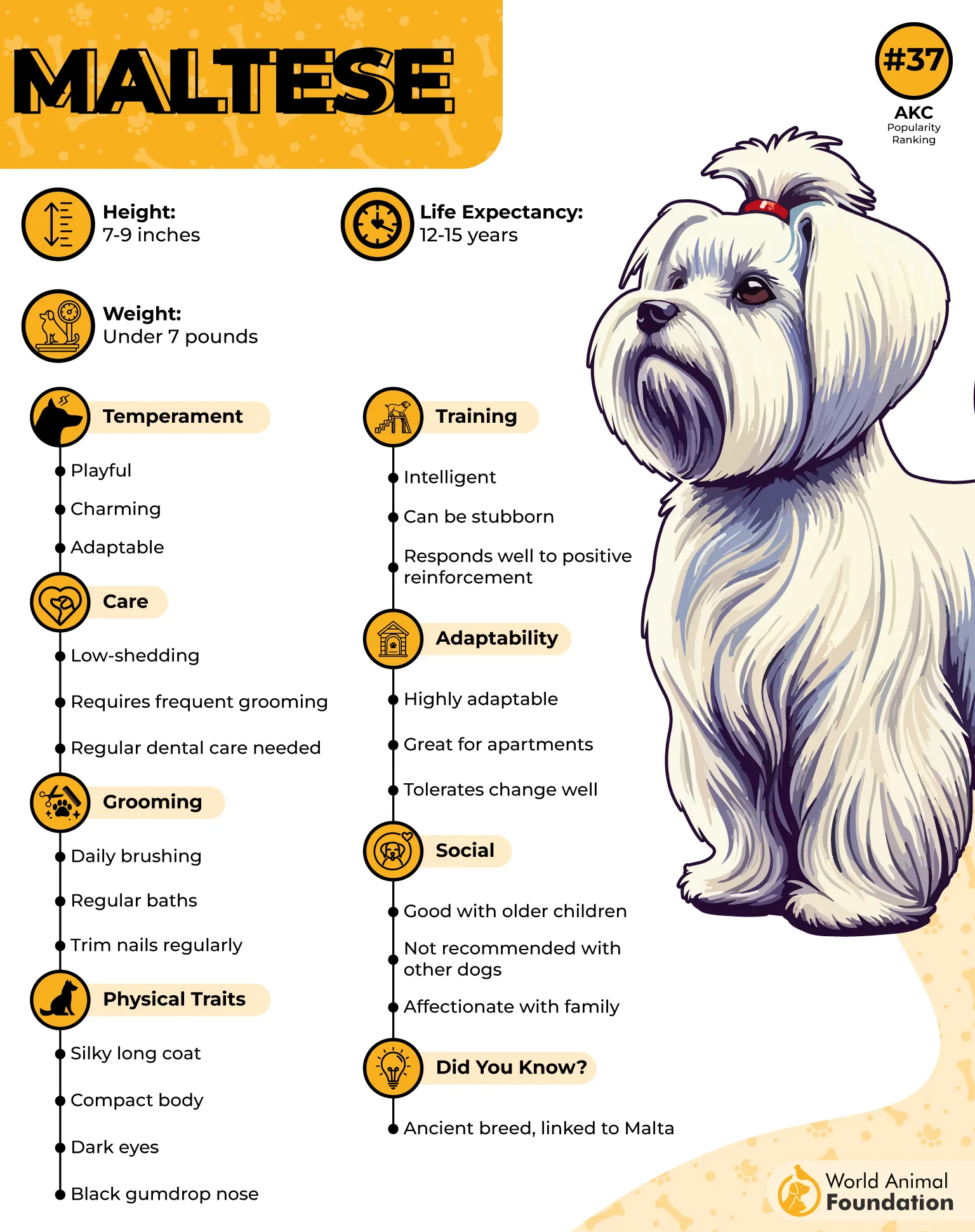
Behavior Suited to Close Companionship
These dogs tend to form tight-knit bonds with their primary caregivers and often seek eye contact to communicate. They’re intuitive in small spaces and adjust their movement around people without needing correction. That’s part of why Maltese dogs are favored in city apartments and smaller homes.
Small Size with Strong Personality
Averaging under 7 pounds, their size makes them ideal for travel, laps, and tight indoor spaces. Despite their size, they’re alert and confident with a playful edge that stands out. Known for their charming personalities, they also have a long history as companion dogs in royal courts.
Conclusion
Small white dogs aren’t just beautiful—they’re deeply intuitive companions. Whether you’re drawn to the elegance of a royal dog like the Maltese or the fluffier charm of a breed with thick coats, each one brings something different to your day.
Their size suits small spaces, but their personalities still crave mental stimulation. Some have dense coats built for cold weather, while others prefer cozy spots indoors. You’ll find dogs with dark eyes full of curiosity, and even independent dogs who still enjoy quiet company.
From playful explorers to laid-back loungers, these breeds carry both presence and warmth. The American Kennel Club recognizes many of them for their temperament, adaptability, and long-standing appeal. They may be far from wild dogs in nature, but in your home, they’ll feel just right.


